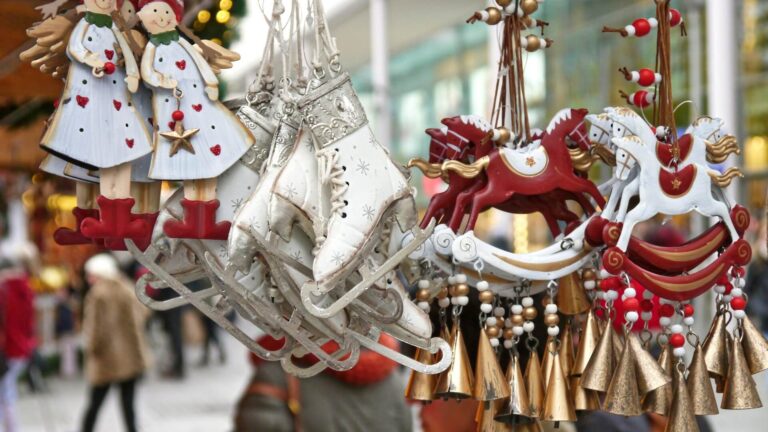
If you need a freelance travel writer or you would like to see your country, city, flight, etc., presented on the blog, drop me an email.
Find our more on Freelance Travel Writer page.
If you ever wondered about the Colossus of Rhodes, one of the seven ancient wonders of the world, here are a few things that I learned about it on this Greek island.
“Look, there, you see those two pillars with a deer and a roe deer on the top, on opposite sides of the harbor entrance? There, that is the spot where the famous Colossus of Rhodes stood, with his feet on opposite sides and boats sailing in through his legs”, our tour guide said.
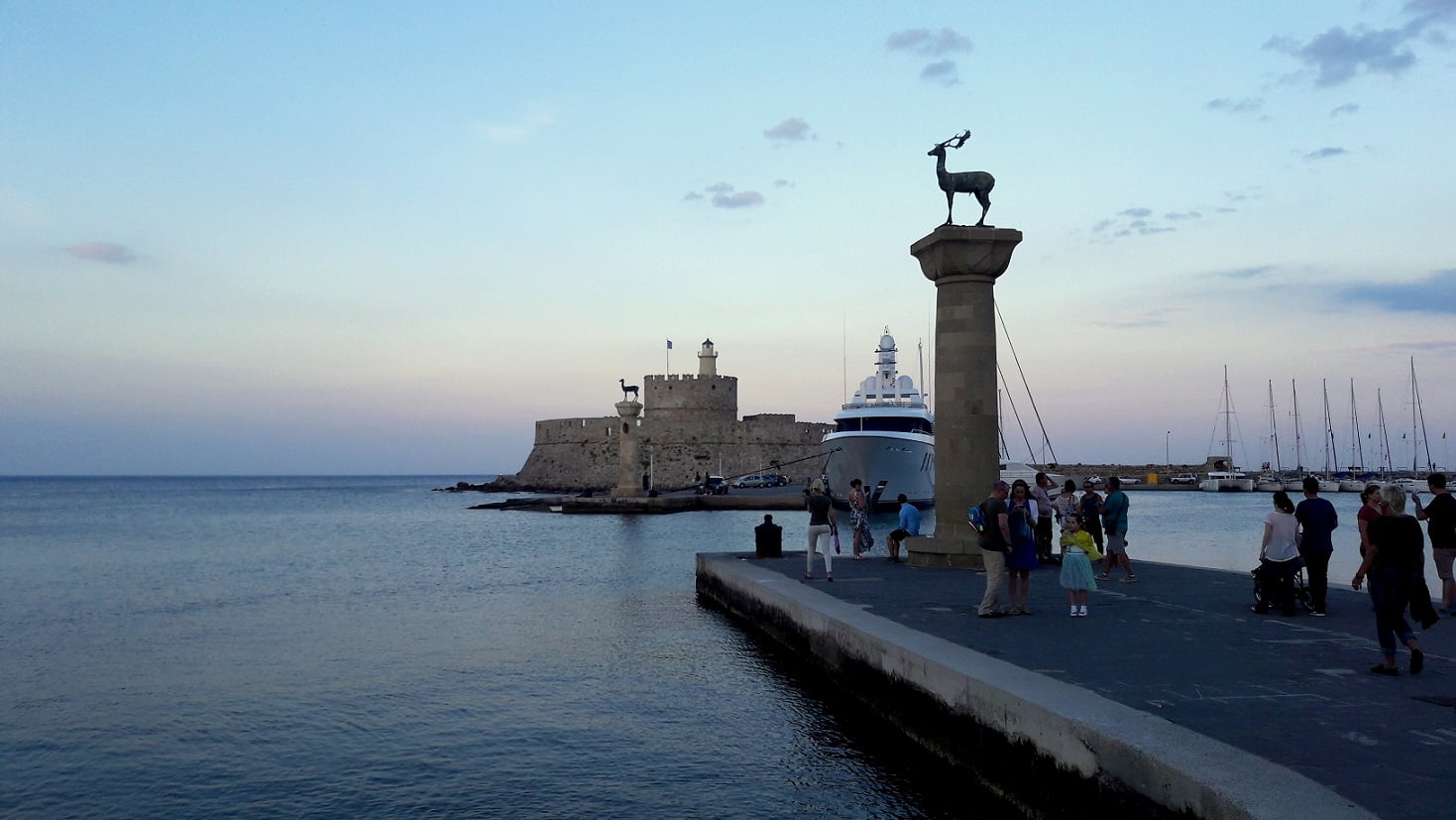
I looked up again. Just imagine, a colossal 31-meter bronze statue standing here. Dedicated to Helios, god of the Sun. (He seems to be going after me everywhere I go here on the island. Just check out the previous post on Rhodes mythology.) This was considered to be both a technical and artistic masterpiece of the time. It’s been designed by Chares of Lindos, the Rhodes town where the famous art and sculpture workshop was.
There is a dispute today whether the Colossus of Rhodes stood right here or a bit up the shore, among the walls of the Old Town where the temple of Helios was once also built.
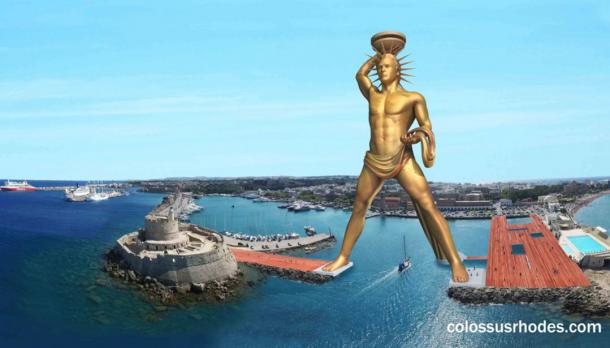
Anyway, the bronze statue of the Sun god that was mesmerizing to see reflecting the sunlight during daytime and was easy to spot from the distance at night since it was holding a torch, was erected to celebrate the victory against the king of Syria Antigonos and his son Dimitrios the Besieger in 305 BC. Antigonos was not pleased with Rhodes’ relations with Egypt’s Ptolemies he was planning to declare war against and so, he sent his son, famous for conquering all the cities he has put an eye on, to invade.
Still, after the year of trying and being ever so superior in numbers over Rhodes’ army, the famous Besieger gave up and took off in shame leaving all his weapons behind.
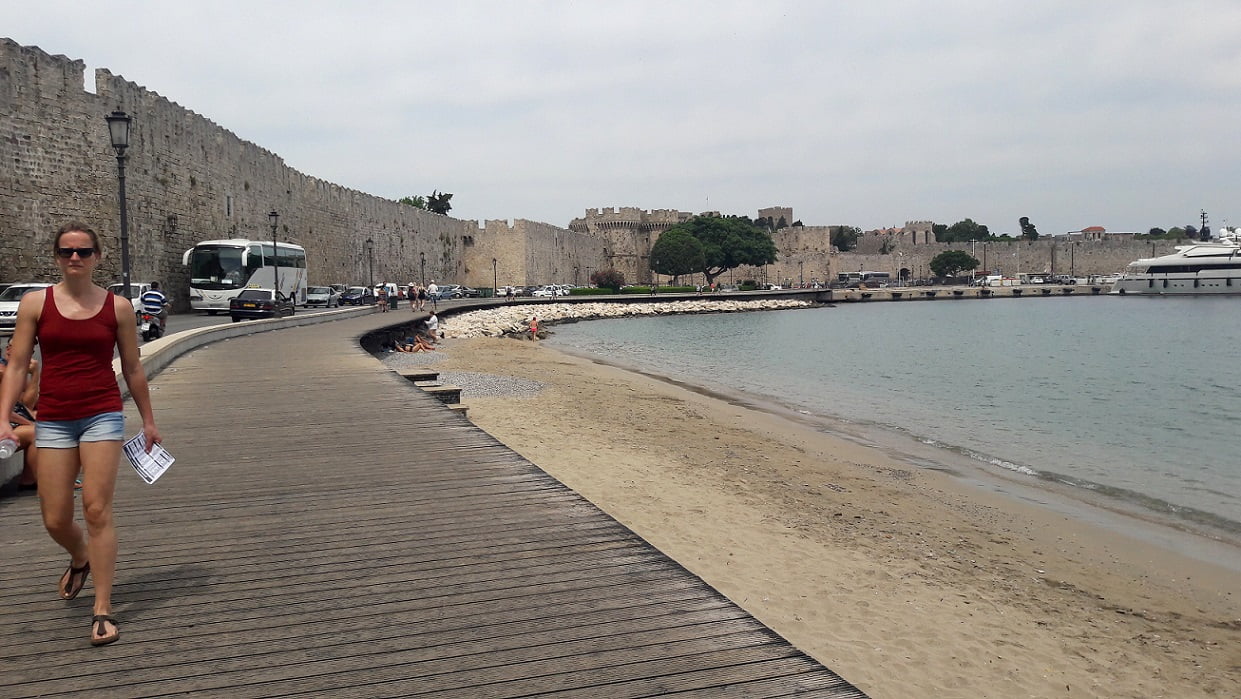
And what did the Rhodians do? They sold it all investing the funds in building a memorable statue of Helios as a symbol of their gratitude to the gods for being in favor of their victory. This was also the turning point for the island since the new era had thus begun for Rhodes until its trade and maritime activities reached peaks that practically no island had ever achieved before.
Unfortunately, the colossal statue stood for only 66 years. During a severe earthquake in 266 BC, the Colossus cracked at the knees and fell.

Fearing of gods’ curse, Rhodians did not re-erect it and it lay there in pieces for many centuries.
It wasn’t until 653 AD when the Arabs came, that the Colossus of Rhodes ruins were sold to a Jewish merchant. The story says that it took him 900 camels to transport the whole statue!
Rhodians were known as the Colossians among both Greeks and Westerners for many centuries. That is how strong their link to this ancient wonder was. Today, pillars with deer and roe deer are put there to also celebrate the deer species that can only be found here on the island. No one knows how they got here in the first place.

They say that another artist who learned the craft in Lindos, the same town Chares came from, is believed to be the author of yet another wonder of the ancient world – the Mausoleum in Halicarnassus (today’s Bodrum in Turkey). I was stunned! Imagine how important the island and its people were back then.
The very origins of the island, according to mythology, are so intriguing. Not only that the island was emerged by Zeus himself from the sea and given to Helios, the Sun god, but the first inhabitants also had magical powers.
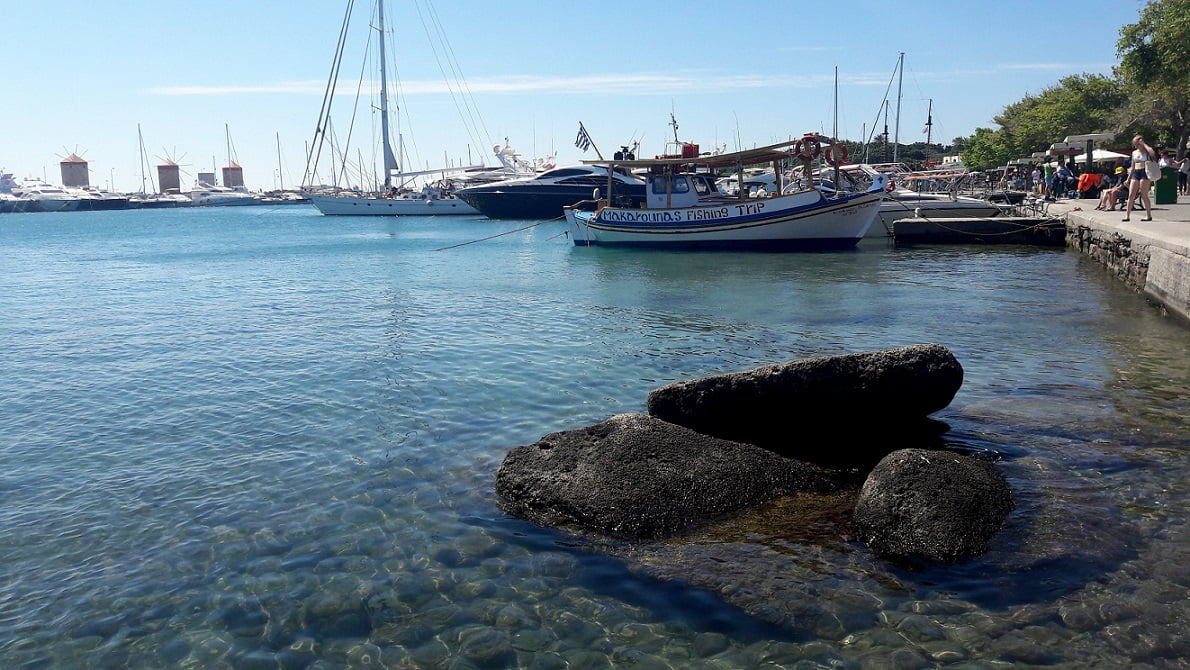
The myth says that they were gifted metal-workers and so, they made the sickle-shaped sword for Chronos and the trident for Poseidon. The children of Helios and the nymph called Rhodos, the Heliads, drove them away from the island.
According to history, the first inhabitants came from Asia Minor, followed by the Phoenicians, then the Minoans from Crete, and the Achaeans. It was when Dorians came and overran the island, and developed the towns of Lindos, Ialyssos, and Kameiros, that the island acquired great power and wealth.
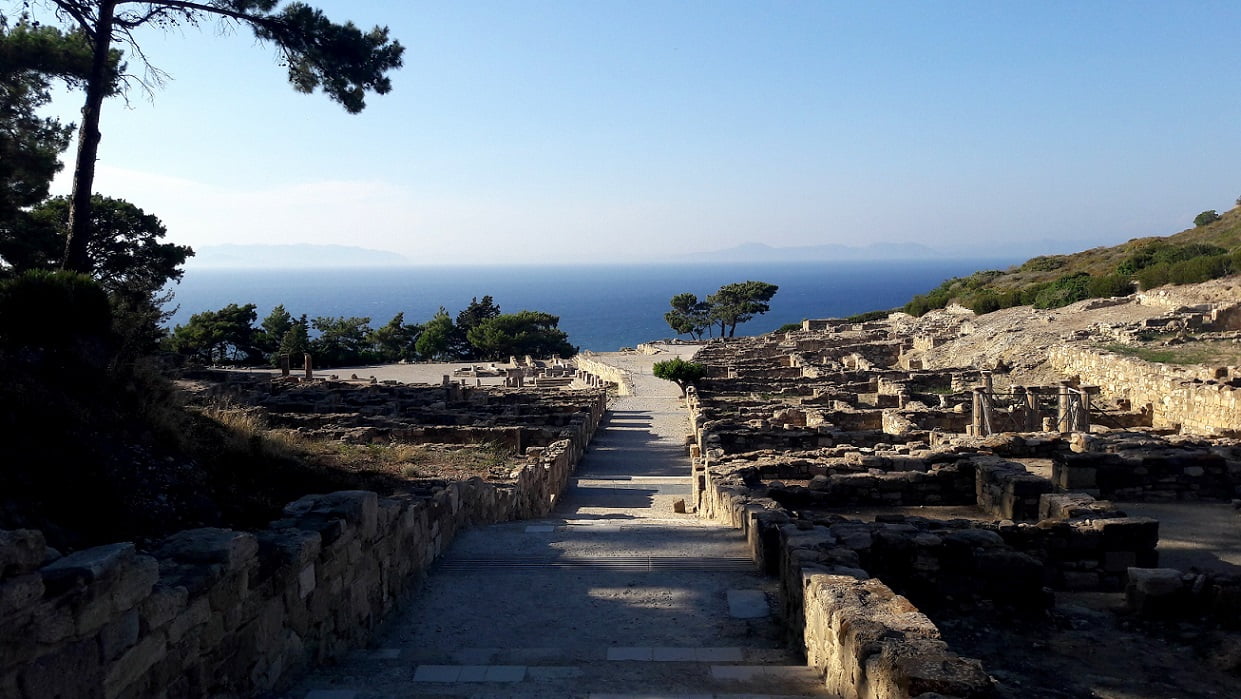
Led by Tlepolemos, the son of Hercules, Rhodians took part in the Trojan War with nine ships. Also, from 1,000 to 600 BC the three towns, above all Lindos, founded many colonies on the shores of Asia Minor, Sicily, France, and Spain. They were later joined with other Doric towns of Kos, Knidos, and Helicarnassus to form the so-called Doric Hexapolis. But, during the Peloponnesian War Dorians decided to join three towns and form another, on the northeastern tip of the island in 408 BC.
The town was given the name of Rhodes.
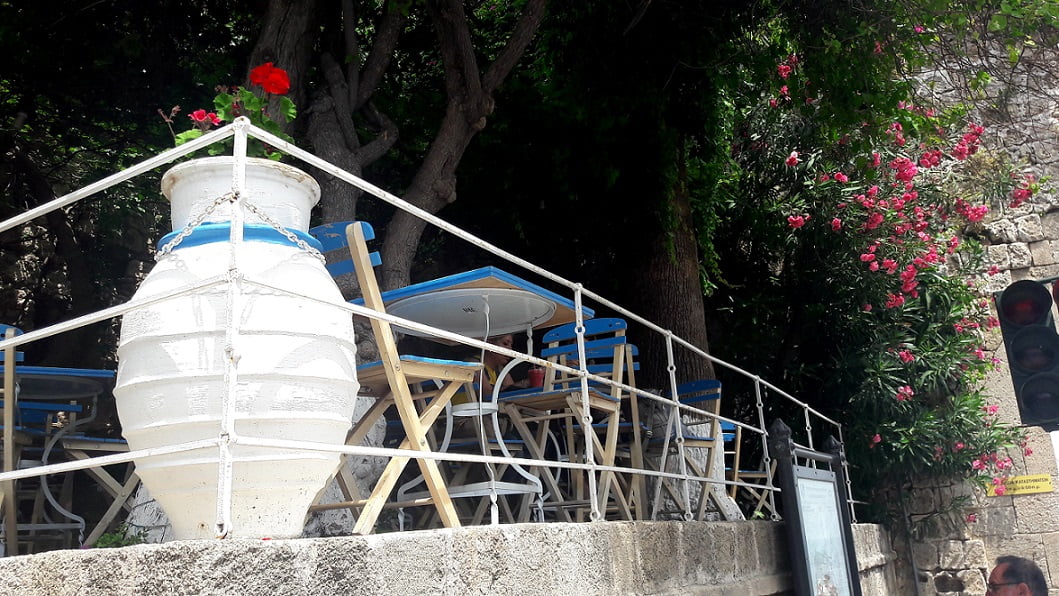
And there I was, traveling in the 21st century AD, trying to calculate how many centuries and years have passed since this town was established. I mean – people with magical powers that did the trident for Poseidon, the Sea god? Or nine ships lined up sailing to Troy? Just imagine!
My mobile phone rang. The sound was so out of this world. The world I was in at the moment. I turned it off, didn’t want to disturb the energy of the place – with Colossus of Rhodes looking from above, Phoenicians who introduced the first alphabet here, ships going off to Troy, and Dorians setting off their plan for the new city.
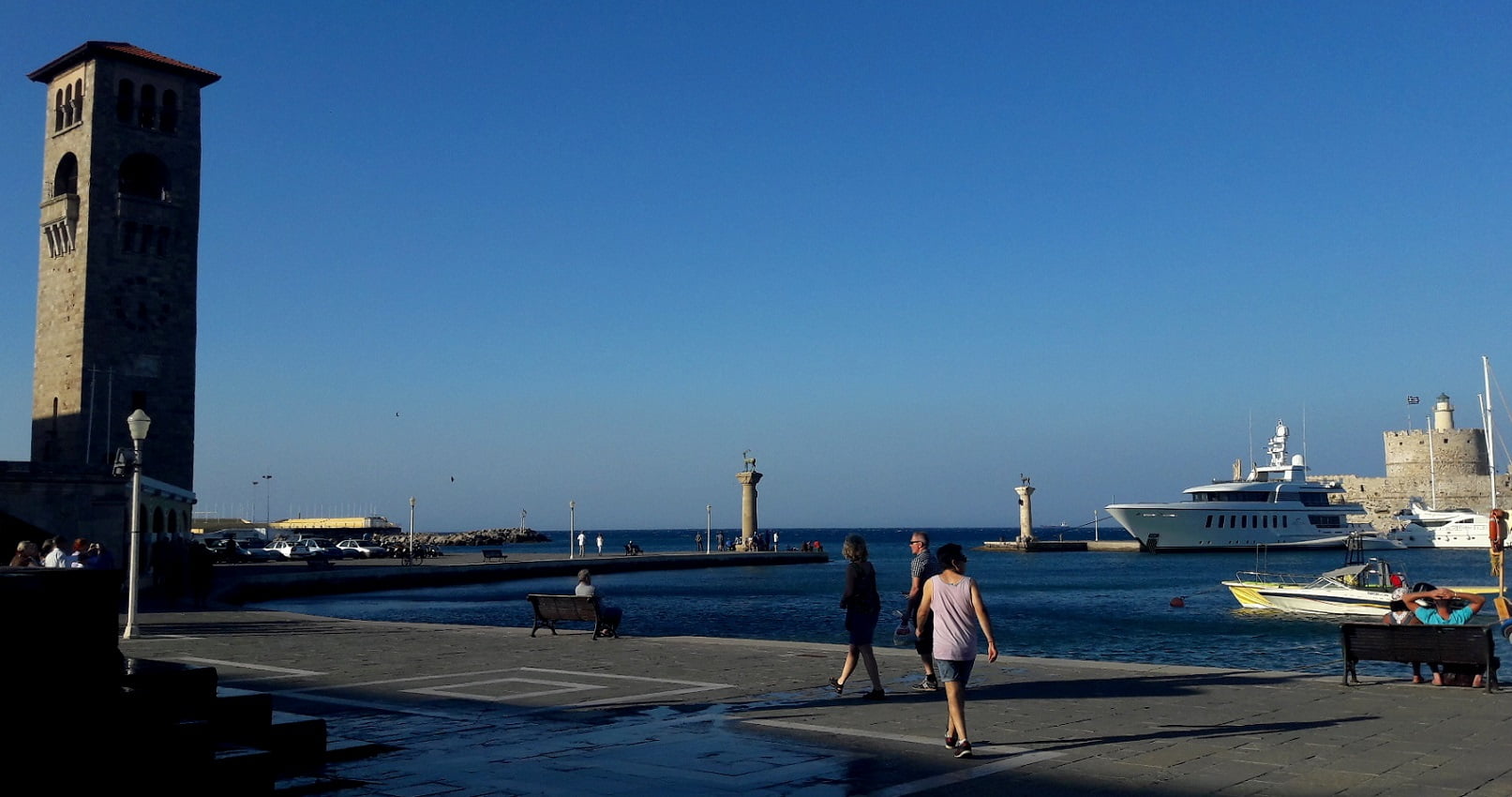
How can one react to such a history – it all happened more than 2,000 years ago. I didn’t even get to begin reading about the “more recent” events during the Christian era. I just stood there in awe, my jaw was dropping.
“If you look towards the line where the sun sets, right from the Rhodes’ harbor, be aware that that is where the 4th-century Christian saint and Greek Bishop of Myra in Asia Minor, was born. You all know him by the name of Saint Nicholas“, our guide said.
I turned my head in awe one more time.
Next: MEET THE (MALTESE) KNIGHTS
The full Rhodes Greece SERIES
If you need a freelance travel writer or you would like to see your country, city, flight, etc., presented on the blog, drop me an email.
Find our more on Freelance Travel Writer page.
I am looking forward to working with you.




20 responses
Very informative. I visited Rhodes back in ’02 and I too was struck with the history of the place and just imaging the Colossus still standing. It must been one hell of a sight. Especially back then when tall buildings were rare. Thanks for sharing.
So true. I know exactly what you mean! 😀 Thanks for stopping by. 🙂
I never been there, I think is such an amazing place and full of history. I didn’t know the story of the colossus! So Cool! Sooner or later I will come to visit this place!
You won’t regret it, it really is nice. 🙂
WOW! How beautiful is the statues?! I love the history and the Greek references. Looks like a place I’d love to explore!
For me, it was extremely interesting! 😀
I love Greece but I’ve never been in Rhodes. Maybe next summer 🙂 great informative post!
Thanks, it’s easy to see how smitten I am by the whole Colossus story! 😀
Wow! What a fascinating history!
It is, isn’t it! Was amazed by the background of the island. 🙂
Wow! What an amazingly informative and exciting post! Rhodes sounds so interesting I would love to visit someday and soak up some of that historic atmosphere. Funnily enough my parents are there as I type! Some great photos too. Thanks for sharing, I’m definitely ready for more Greek mythology now.
Hehehe, I’m always ready for Greek mythology. Easy guess, right! 😀 Thanks for stopping by and say hello to your parents. 🙂
I love history for this exact reason. I always enjoyed learning about ancient civilizations and even playing games like Age of Empires and learning more about them. I cannot imagine the engineering it took to erect such a statue like they did. The amount of history that took place there is astonishing.
So true, it was such a serious undertaking at the time. I really get amazed by data like these. 🙂
Never been to Rhodes but your article is very informative, I liked it!
Thanks, hope it made you want to go. 😉
You’re quite the storyteller! I haven’t been to Rhodes yet but I do find the stories absolutely fascinating. This post makes me excited to see it soon!
Best,
Rebecca
Thank you so much for you kind words, makes me feel so proud! 🙂
Rhodes is an amazing island and it’s crazy to think about how many stories of legend have ended up taking places on such a tiny island. The history is my favorite part and I’ve heard there are talks about building a replacement, but they get major earthquakes over there, so I hope it will be able to handle it!
There’s a serious history lesson here for any rebuilding plans – the ancient Colossus was actually destroyed by an earthquake!